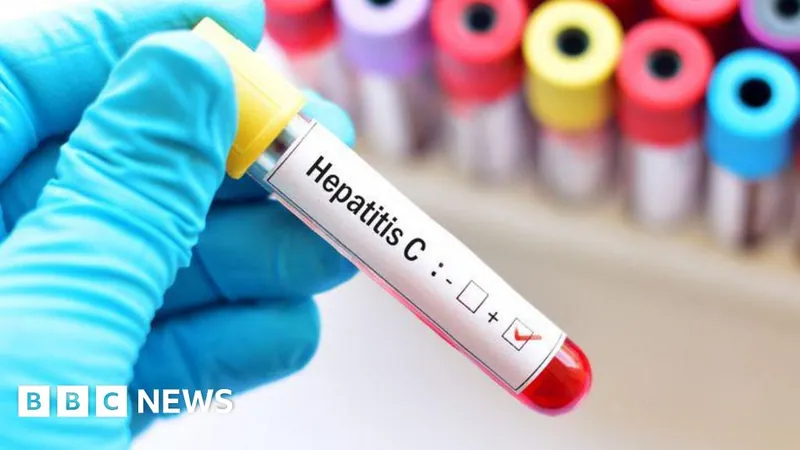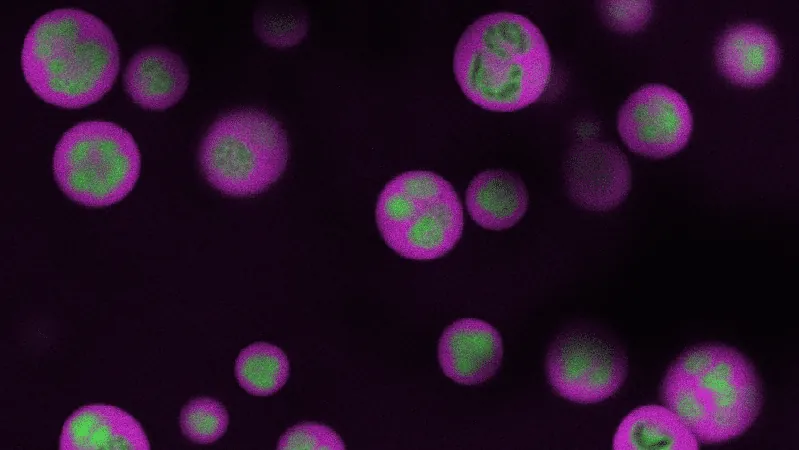
The Alarming Case of H5N1: B.C. Doctor Treats Teen for Two Months Amid Rising Avian Flu Concerns
2025-01-13
Author: Emma
Introduction
A doctor in British Columbia has raised alarm bells about the potential threat of H5N1 avian flu infections in humans following a harrowing two-month treatment of a 13-year-old patient who contracted the virus. This case, deemed extremely rare, signifies a troubling shift in the behavior of avian influenza as it spreads from wild birds and poultry to humans.
Initial Encounter and Diagnosis
Dr. David Goldfarb, a pediatric infectious disease physician at BC Children's Hospital, first encountered the young patient on November 8. She was in severe respiratory distress, but initial tests failed to indicate the presence of avian flu. It was only after further investigation that the alarming reality became clear, as Dr. Goldfarb quickly identified classic symptoms associated with recent avian flu cases, such as conjunctivitis.
Realizing the gravity of the situation, Dr. Goldfarb urgently contacted the BC Centre for Disease Control to arrange for H5N1 testing, which confirmed the diagnosis later that day. This marked the first known case of H5N1 acquired in Canada, compounding fears about its transmission potential.
Treatment and Care
Over the following weeks, this young patient required extensive care and resources, with a medical team consisting of an array of specialists, from microbiologists to intensive care nurses. Public health officials launched an investigation into the source of her infection, which remains unidentifiable. As her condition worsened, she was intubated and placed on life support just one day after diagnosis, and her treatment included multiple antiviral medications.
Dr. Goldfarb underscored the severity of the case, stating, "This child needed maximum respiratory support available in a modern ICU." Fortunately, her condition began to improve by late November, leading to her being discharged home on January 7.
Public Health Implications
The implications of this case extend beyond individual health; the BC Centre for Disease Control is currently analyzing genetic features of the avian flu strain the patient contracted and comparing it with a recent death linked to H5N1 in Louisiana. Experts warn that certain genetic mutations observed could make the virus more adept at binding to human cells, which raises concerns about potential human-to-human transmission.
While there was no evidence of human transmission in this particular case, the risk remains that under the right conditions, the virus could mutate and adapt further, increasing the likelihood of transmission in the future.
Shift in Avian Flu Dynamics
Historically, avian flu was primarily a concern for travelers to Asia and Africa, but the dynamics have shifted dramatically. Since 2022, the virus has spread widely throughout Canada due to migratory patterns of wild birds, leading to over 3,400 confirmed cases of avian flu in Canadian wildlife.
Conclusion and Future Vigilance
Dr. Goldfarb concluded that this troubling trend could lead to more cases of severe avian influenza within North America, warning, "We are now, for the first time, experiencing severe, locally acquired avian influenza."
As researchers continue to monitor and study this evolving situation, public health vigilance remains crucial. The threat of H5N1 may be more pressing than many realize, and understanding its transmission path could be key in preventing future outbreaks.









 Brasil (PT)
Brasil (PT)
 Canada (EN)
Canada (EN)
 Chile (ES)
Chile (ES)
 Česko (CS)
Česko (CS)
 대한민국 (KO)
대한민국 (KO)
 España (ES)
España (ES)
 France (FR)
France (FR)
 Hong Kong (EN)
Hong Kong (EN)
 Italia (IT)
Italia (IT)
 日本 (JA)
日本 (JA)
 Magyarország (HU)
Magyarország (HU)
 Norge (NO)
Norge (NO)
 Polska (PL)
Polska (PL)
 Schweiz (DE)
Schweiz (DE)
 Singapore (EN)
Singapore (EN)
 Sverige (SV)
Sverige (SV)
 Suomi (FI)
Suomi (FI)
 Türkiye (TR)
Türkiye (TR)
 الإمارات العربية المتحدة (AR)
الإمارات العربية المتحدة (AR)